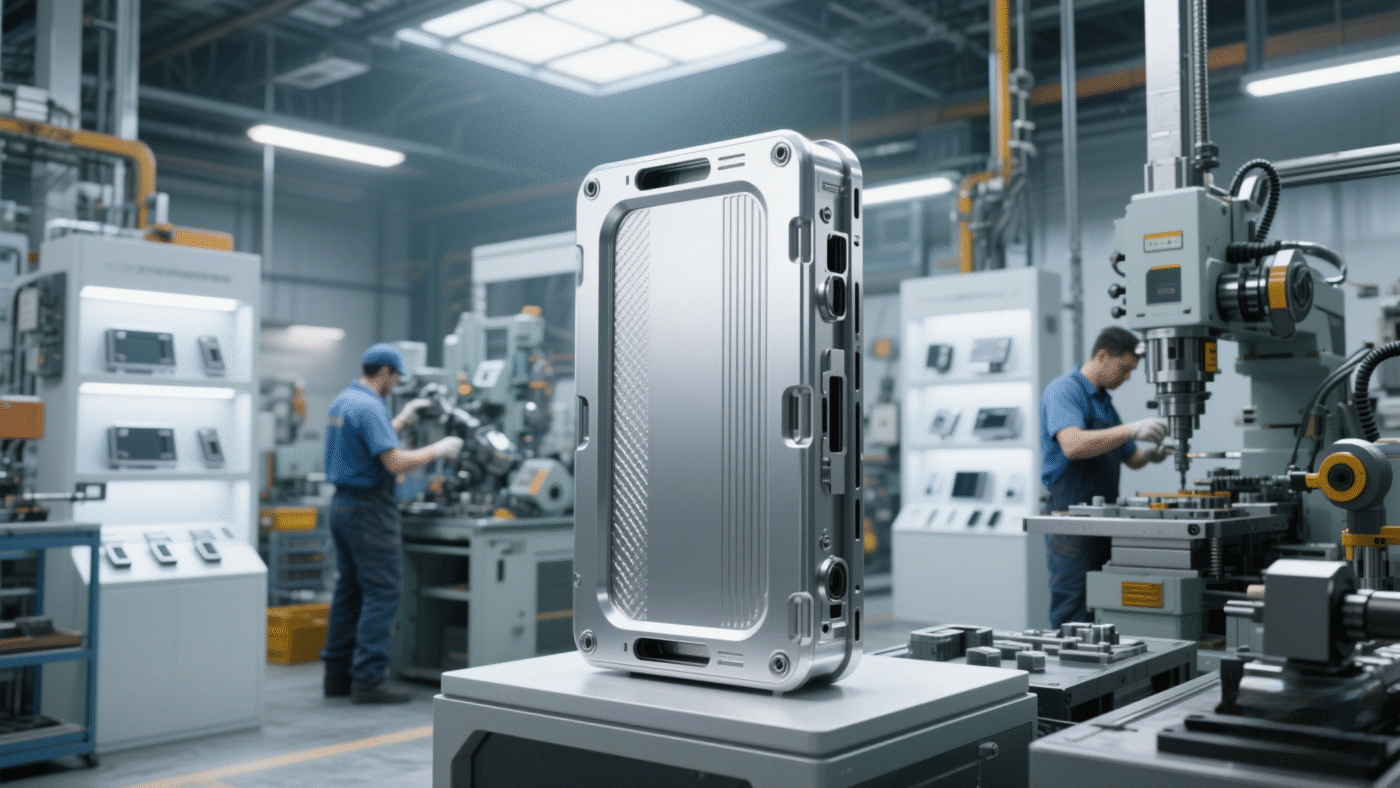In industrial manufacturing and consumer electronics, the choice of enclosure materials often defines a product’s core competitiveness. Aluminum alloy, with its lightweight properties, high strength, corrosion resistance, and excellent heat dissipation, has become the preferred material for enterprises. Through three industry-specific case studies, this article demonstrates how Aluminum Enclosure Cases create value and drive market breakthroughs.
I. Smart Security Cameras: Balancing Lightweight Design and Rugged Protection
Industry Pain Points
A security equipment manufacturer faced challenges in developing outdoor cameras: stable operation in extreme temperatures (-30°C to 60°C), resistance to wind/sand/rain erosion, and lightweight requirements for high-altitude installation. Traditional plastic enclosures suffered from poor heat dissipation and aging, while steel enclosures added excessive weight and costs.
Aluminum Alloy Solution
The company adopted 6061-T6 aluminum alloy for the Aluminum Enclosure Case. Using precision die-casting technology, the case’s wall thickness was reduced to 1.5mm, achieving a 60% weight reduction versus steel. The anodized aluminum alloy surface formed a dense oxide layer, passing 1,000+ hours of salt spray testing for harsh-environment durability. With a thermal conductivity of 205W/(m·K), combined with internal heat dissipation fins, the camera’s core components saw a 15°C temperature drop, reducing failure rates by 40%.
Results
The product’s environmental adaptability propelled its market share into the industry’s top three within six months.
II. High-End Audio Equipment: Acoustic Excellence Meets Aesthetic Innovation
Industry Pain Points
A Hi-Fi audio brand sought to unify premium sound quality with sleek design for its flagship speakers. Traditional wooden enclosures limited complex shapes and suffered from moisture damage.
Aluminum Alloy Solution
Partnering with an aluminum alloy processor, the brand developed:
-
A seamless curved Aluminum Enclosure Case using 7075 aviation-grade aluminum alloy via CNC milling, ensuring structural integrity and visual appeal.
-
High-rigidity aluminum alloy construction that reduced resonance, boosting sound purity by 30% with internal damping.
-
Sandblasted and wire-drawn surfaces for a premium metallic finish, elevating brand perception.
Results
The speaker series won the Red Dot Design Award, achieved 50% higher premium pricing, and solidified its high-end market position.
III. EV Battery Packs: Safety and Efficiency Redefined
Industry Pain Points
An EV manufacturer needed battery packs to withstand 500MPa extrusion forces while maximizing energy density. Steel enclosures met safety standards but compromised range due to weight.
Aluminum Alloy Solution
-
A 5052 aluminum alloy frame with honeycomb-structured aluminum plates reduced weight by 35% and boosted energy density by 12%.
-
170MPa yield strength aluminum alloy and laser welding ensured safety compliance, surpassing national standards in puncture/compression tests.
-
Aluminum alloy’s thermal management stabilized battery temperature within ±3°C, extending lifespan.
Results
The Aluminum Enclosure Case-equipped vehicle achieved a 600km+ range and drove an 80% annual sales surge, becoming a consumer favorite.
Conclusion
From security systems to luxury audio and electric vehicles, Aluminum Enclosure Cases empower industries through aluminum alloy’s multifunctional superiority. Advances in material science and processing technologies (e.g., die-casting, CNC milling, laser welding) continue expanding aluminum alloy’s applications. For enterprises, adopting Aluminum Enclosure Cases transcends material upgrades—it’s a strategic leap in product competitiveness. As innovation accelerates, aluminum alloy will unlock new value across industries, fueling market leadership.

